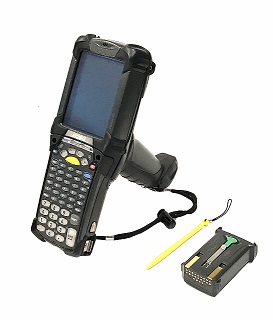Use a Scanner Machine
In today’s digital age, converting physical documents into digital formats is essential for organization, sharing, and preserving important information. A scanner machine is a pivotal tool in this process, transforming paper documents, photographs, and other items into digital files. This article provides a comprehensive guide on how to use a scanner machine effectively, from setup to troubleshooting.
a. Unboxing and Placement
- Unbox the Scanner: Begin by carefully unpacking the scanner, ensuring that you have all the necessary components such as cables, installation CDs, and manuals.
- Choose a Location: Place the scanner on a flat, stable surface close to your computer. Make sure there is enough space around the scanner to open the lid fully and easily place documents on the scanning bed.
b. Connecting to Your Computer :Use a Scanner Machine
- USB Connection: Connect one end of the USB cable to the scanner and the other end to an available USB port on your computer.
- Wireless Connection: If your scanner supports Wi-Fi, follow the manufacturer’s instructions to connect it to your wireless network. Typically, this involves using the scanner’s control panel to select your network and enter the password.

c. Installing Drivers and Software : Use a Scanner Machine
- Driver Installation: Install the necessary drivers. If an installation CD is provided, use it, or download the drivers from the manufacturer’s website. Follow the on-screen instructions to complete the installation.
- Scanner Software: Install any additional software that came with your scanner. This software usually includes utilities for scanning, editing, and managing scanned files.

2. Preparing to Scan
a. Power On
- Turn On the Scanner: Ensure the scanner is connected to a power source and press the power button to turn it on.
- Check Connections: Verify that the scanner is recognized by your computer, which can typically be confirmed in the devices section of your computer’s settings.
b. Prepare the Document
- Clean the Document: Remove any dust, staples, or paper clips from the document to avoid damaging the scanner or affecting the scan quality.
- Align the Document: Open the scanner lid and place the document face-down on the scanner glass, aligning it with the guides on the edges to ensure a straight scan.
3. Scanning the Document
a. Using Scanner Software
- Open Scanner Software: Launch the scanner software installed on your computer.
- Select Scan Settings: Choose your scan settings, including resolution (measured in DPI), color mode (color, grayscale, or black and white), and file format (PDF, JPEG, TIFF, etc.). Higher DPI settings provide better quality but result in larger file sizes.
b. Perform the Scan
- Preview the Scan: Use the preview function to see a preliminary scan of your document. This allows you to adjust placement or settings before performing the final scan.
- Adjust Settings: Make any necessary adjustments to brightness, contrast, or cropping based on the preview.
- Start the Scan: Click the scan button to begin the final scan. The scanner will process the document and save it to your designated location on the computer.
4. Saving and Managing Scanned Files
a. Naming and Organizing
- Name Your File: Assign a descriptive name to the scanned file to make it easy to identify later.
- Choose a Save Location: Save the file in an organized manner, using folders based on categories like date, document type, or project.
b. File Formats
- PDF: Ideal for multi-page documents and easy sharing.
- JPEG: Common for photos and single-page documents.
- TIFF: Preferred for high-quality images and documents that need long-term archiving.
5. Troubleshooting Common Issues
a. Scanner Not Detected
- Check Connections: Ensure that all cables are securely connected.
- Restart Devices: Restart both the scanner and your computer.
- Reinstall Drivers: Uninstall and reinstall the scanner driver software.
b. Poor Scan Quality
- Clean the Scanner Glass: Dust or smudges can affect the scan quality. Clean the glass with a soft, lint-free cloth.
- Adjust Settings: Increase the DPI or change the color mode for better quality.
- Update Software: Make sure you have the latest version of the scanner software installed.
c. Paper Jams or Misfeeds
- Clear Obstructions: Open the scanner and carefully remove any jammed paper.
- Smooth the Document: Ensure the document is flat and free of wrinkles before scanning.
Conclusion
Using a scanner machine effectively involves understanding each step from setup to troubleshooting. By following this guide, you can ensure that your documents are digitized accurately and efficiently. Whether you are archiving important paperwork, sharing documents, or preserving photographs, a scanner machine is a valuable tool that simplifies the transition from physical to digital.
NOTE: Use a Scanner Machine: This is urgent when before scan
Ensure your scanner must turned on and connected to Pc or
Open your scanning software
Place the pages you want to be scanned into the scanner
Scan document and
Check scan preview
Save scanned document

